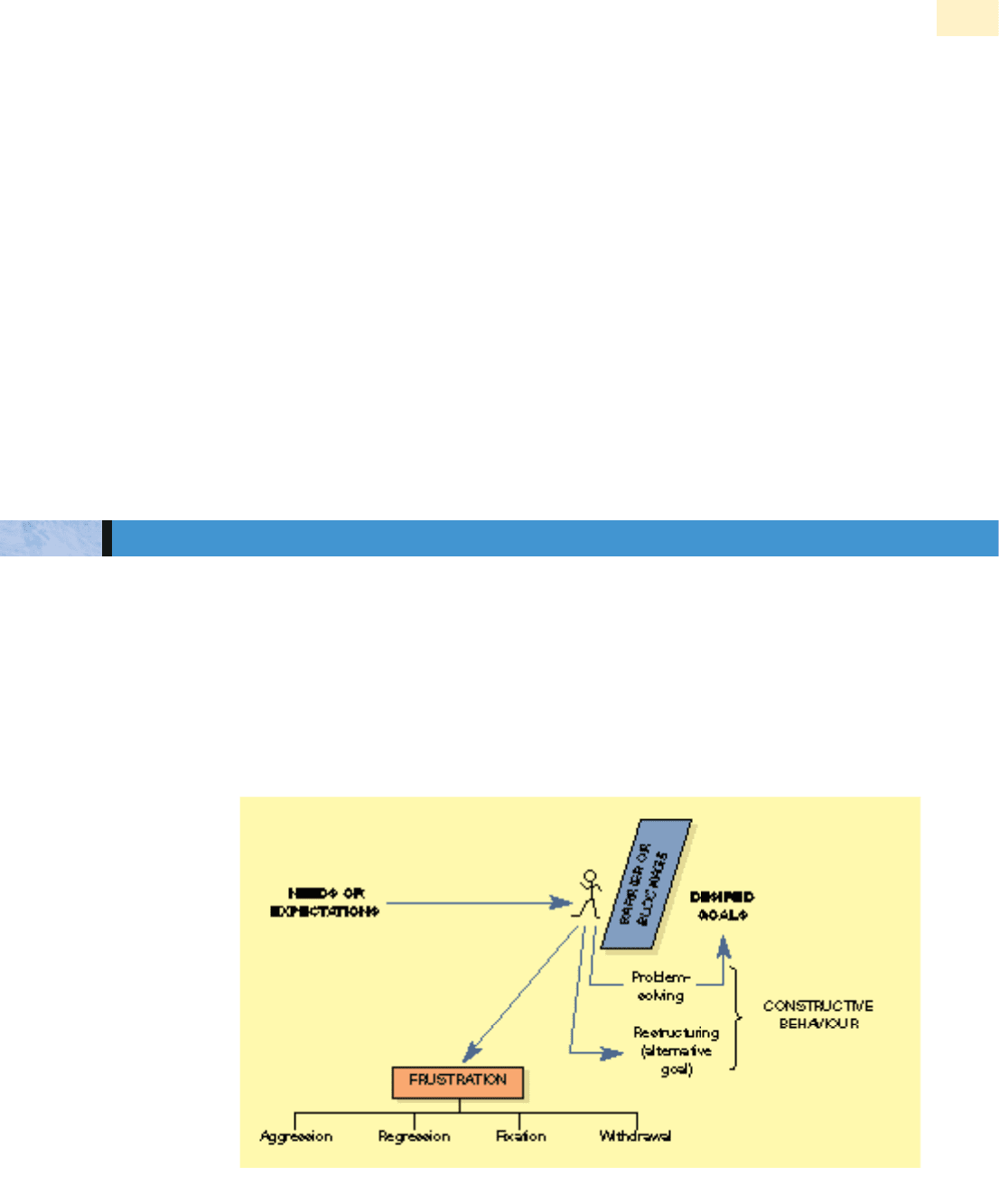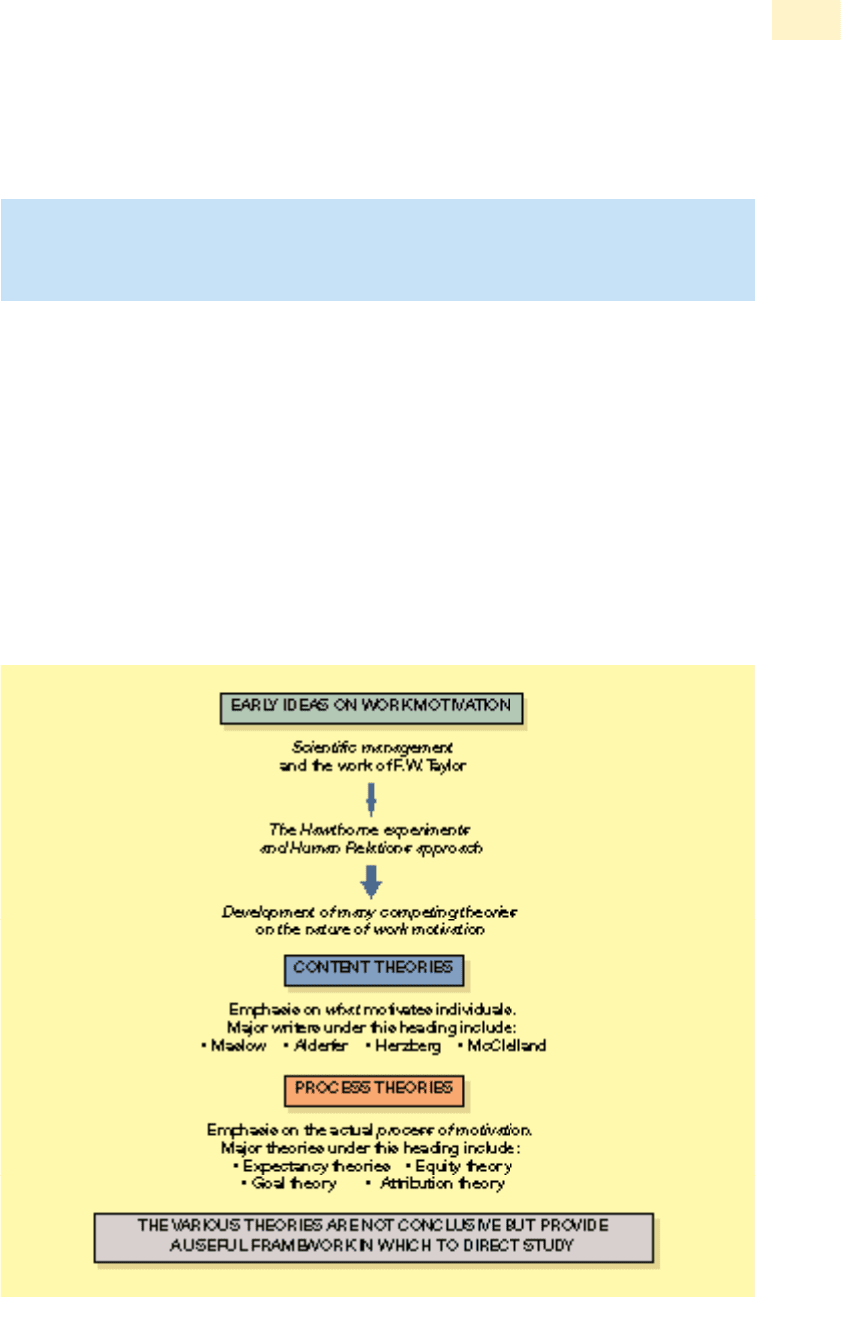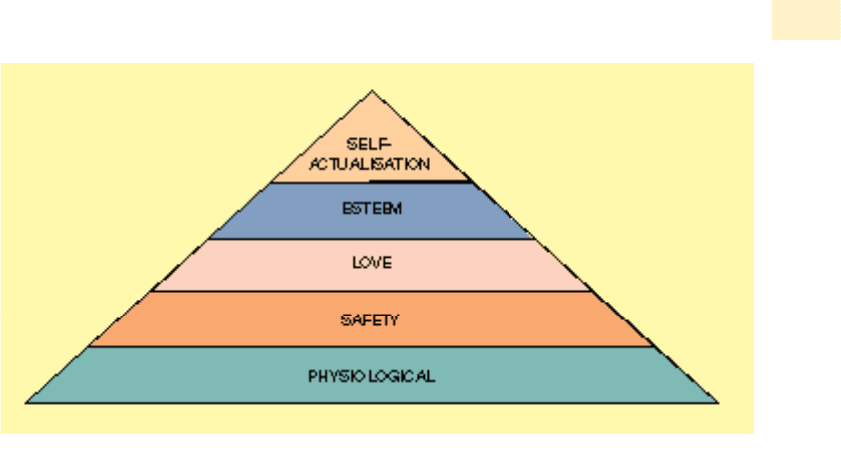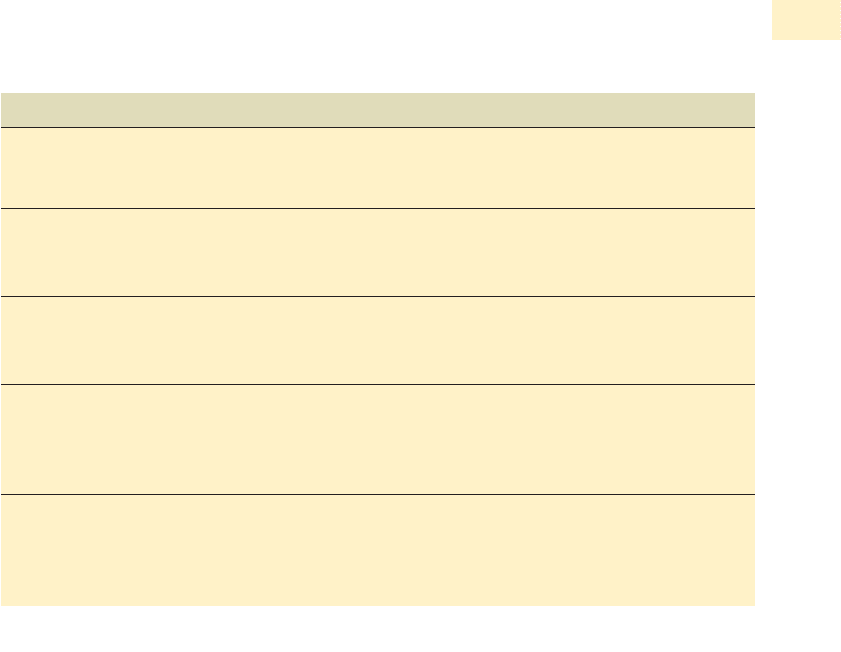Mullins L.J. Management and organisational behaviour, Seventh edition
Подождите немного. Документ загружается.


According to a major international study undertaken by Proudfoot Consulting, a major
reason for productivity loss was poor working morale. Aspects of poor working morale
included: people feeling undervalued and poorly rewarded; an absence of positive team
spirit; low motivation; lack of attention to quality; unwillingness to see a job well
done; and a poor sense of belonging.
13
Allen and Helms suggest that different types of reward practices may more closely
complement different generic strategies and are significantly related to higher levels of
perceived organisational performance.
Our findings have important, practical implications for senior managers and others responsible
for the implementation of strategies and rewards in organizations. Top managers must work
closely with lower-level managers as well as human resources professionals to craft reward sys-
tems that are consistent with motivational concepts and at the same time support their chosen
organizational strategy. The relationship between strategy and rewards needs to be clearly com-
municated to the employees so they understand the organization’s strategy as well as the
linkages between their rewards and strategy.
14
With a positive motivation philosophy and practice in place, productivity, quality and
service should improve because motivation helps people towards: achieving goals;
gaining a positive perspective; creating the power to change; building self-esteem and
capability; and managing their development and helping others.
15
What happens if a person’s motivational driving force is blocked and they are unable
to satisfy their needs and expectations, and what is the likely effect on their work per-
formance? There are two possible sets of outcomes: constructive behaviour or
frustration. (See Figure 12.3.)
Constructive behaviour is a positive reaction to the blockage of a desired goal and can
take two main forms: problem-solving or restructuring.
■ Problem-solving is the removal of the barrier – for example, repairing a damaged
machine, or bypassing an unco-operative superior.
CHAPTER 12 WORK MOTIVATION AND REWARDS
475
FRUSTRATION-INDUCED BEHAVIOUR
Figure 12.3 A basic model of frustration
Constructive
behaviour

■ Restructuring, or compromise, is the substitution of an alternative goal, although
such a goal may be of a lower order – for example, taking an additional part-time job
because of failure to be promoted to a higher grading.
Note: Even if a person engages in constructive behaviour in response to a barrier or
blockage it could be said that the person was ‘frustrated’, if only mildly or in the short
term, in an attempt to satisfy a desired goal. However, the term frustration is usually
interpreted as applying to negative responses to a barrier or blockage which prevents
satisfaction of a desired goal.
Frustration is a negative response to the blockage of a desired goal and results in a
defensive form of behaviour. There are many possible reactions to frustration caused by
the failure to achieve a desired goal. These can be summarised under four broad head-
ings: aggression; regression; fixation; and withdrawal.
16
However, these categories are
not mutually exclusive. Most forms of frustration-induced behaviour at work are a
combination of aggression, regression and fixation.
Aggression is a physical or verbal attack on some person or object; for example,
striking a supervisor, rage or abusive language, destruction of equipment or docu-
ments, malicious gossip about a superior. This form of behaviour may be directed
against the person or object which is perceived as the source of frustration, that is the
actual barrier or blocking agent. However, where such direct attack cannot be made,
because, for example, the source of frustration is not clear or not specific, or where the
source is feared, such as a powerful superior, then aggression may be displaced towards
some other person or object.
With displaced aggression the person may find an easier, safer person or object as a
scapegoat for the outlet of frustration – for example, picking arguments with col-
leagues, being short-tempered with subordinates, shouting at the cleaners or kicking
the waste-paper bin. A more constructive form of displaced aggression is working off
frustrated feelings through demanding physical work or sport, or perhaps by shout-
ing/cursing when alone or in the company of an understanding colleague.
Regression is reverting to a childish or more primitive form of behaviour – for ex-
ample, sulking, crying, tantrums, or kicking a broken machine or piece of equipment.
Fixation is persisting in a form of behaviour which has no adaptive value and contin-
uing to repeat actions which have no positive results – for example, the inability to
accept change or new ideas, repeatedly trying a machine which clearly will not work,
insisting on applying for promotion even though not qualified for the job.
Withdrawal is apathy, giving up or resignation – for example, arriving at work late
and leaving early, sickness and absenteeism, refusal to accept responsibility, avoiding
decision-making, passing work over to colleagues, or leaving the job altogether.
Factors influencing frustration
Among the factors which determine an individual’s reaction to frustration are:
■ the level and potency of need (see, for example, Maslow’s theory of motivation,
discussed below);
■ the degree of attachment to the desired goal;
■ the strength of motivation;
■ the perceived nature of the barrier or blocking agent; and
■ the personality characteristics of the individual.
It is important that managers attempt to reduce potential frustration through, for
example:
■ effective recruitment, selection and socialisation;
■ training and development;
476
PART 4 THE INDIVIDUAL
Frustration
(negative
responses)

■ job design and work organisation;
■ equitable personnel policies;
■ recognition and rewards;
■ effective communications;
■ participative styles of management;
■ attempting to understand the individual’s perception of the situation.
Proper attention to motivation, and to the needs and expectations of people at work
will help overcome boredom and frustration-induced behaviour.
Earlier writers, such as F. W. Taylor, believed in economic needs motivation. Workers
would be motivated by obtaining the highest possible wages through working in the
most efficient and productive way. Performance was limited by physiological fatigue.
For Taylor, motivation was a comparatively simple issue – what the workers wanted
from their employers more than anything else was high wages.
17
This approach is the
rational–economic concept of motivation. The ideas of F. W. Taylor and his ‘rational–eco-
nomic needs’ concept of motivation (discussed in Chapter 3) and subsequent
approaches to motivation at work have fuelled the continuing debate about financial
rewards as a motivator and their influence on productivity.
Where there is little pleasure in the work itself or the job offers little opportunity for
career advancement, personal challenge or growth, many people may appear to be
motivated primarily, if not exclusively, by money. For example, Weaver suggests that
for many hourly workers in the hospitality industry, such as dishwashers, waiting or
housekeeping staff, their work does not change much among different companies and
there is little attachment to a particular company. For such staff, Weaver proposes a
‘Theory M’ programme of motivation based on direct cash rewards for above average
performance. A percentage base is calculated from the average performance of workers
on the staff.
18
In a survey of attitudes to work involving a random sample of 1000 workers, when
asked to specify the biggest problem at work the most popular response was poor pay
at 18 per cent.
19
Another survey of human resource managers responding to Personnel
Journal found that it is often difficult to attract, retain and motivate minimum wage
workers on pay alone. The survey uncovered that 62 per cent of respondents had a
problem retaining minimum wage workers strictly because of pay. Many employers
must provide other incentives such as bonuses or prizes – on top of pay – to keep work-
ers in the job.
20
On the other hand, we frequently see pronouncements from prominent business
figures that motivation is about much more than money.
The short answer appears to be: that for the vast majority of people, money is clearly
important and a motivator at work but to what extent and how important depends
upon their personal circumstances and the other satisfactions they derive from work.
CHAPTER 12 WORK MOTIVATION AND REWARDS
477
MONEY AS A MOTIVATOR
I was convinced that the success of any business depended on having the right people and
motivating them properly. As I thought about this, I decided that motivation was not just
about money. It was about creating an environment in which people enjoyed working. When
I joined Morgan Grenfell, my aim would be to get the best out of people whether they were
young or old, experienced fund managers or less experienced.
Nicola Horlick, formerly Managing Director, Morgan Grenfell Investment Management
21

The bottom line is surely the extent to which money motivates people to work well
and to the best of their abilities. Although pay may still make people tick, there are
now a number of other important influences on motivation.
Motivation other than by money
The Income Data Services (IDS) draws attention to the challenges of motivation during
economic circumstances of low inflation. ‘Most of us have lived and worked through a
unique period during which pay and prices rose continuously for decades.’ IDS found
that although the importance of large bonuses in motivating people could not be
ignored, especially in high growth companies, there is a need to provide new forms of
recognition for employees that do not depend on promotion or money. In the main
employers agreed that they now face the prime challenges of: breaking with the habit
of automatic annual increases in pay; shifting the focus of reward from individual per-
formance to team success; moving from ‘quantity’ to ‘quality’; and managing a more
diverse workforce by policies which recognise different needs.
22
As Grayson and Hodges point out, historically loyalty was bought and employers
offered gradual progression up the hierarchy, a decent salary and job security in return
for a hard day’s work. ‘Increasingly, motivation is based on values rather than purely
on financial reward.’
23
And a similar point is made by Saunders:
If the 1980s were all about money, and people were only as good as their last bonus, in more recent
years time has become the new money, and quality-of-life issues have come to the fore. Benefits
that replenish the psychological contract are becoming the most valuable. So holiday arrange-
ments, career breaks and potential for flexible hours and homeworking are now on the agenda.
24
A recent study from the Economic & Social Research Council analysed the influences
on employee behaviour and productivity and raises the question of: what if employees
are guided not only by monetary incentives but also social norms? Social norms inter-
act with economic incentives and may have a large effect upon organisational
performance.
25
There are many competing theories which attempt to explain the nature of motiva-
tion. These theories may all be at least partially true, and help to explain the behaviour
of certain people at certain times. However, the search for a generalised theory of
motivation at work appears to be in vain. A major determinant of behaviour is the
particular situation in which individual workers find themselves. Motivation varies
over time and according to circumstances. It is often most acute for younger people
starting on their career, for people at mid-career positions or for those who find limited
opportunities for promotion or further advancement. For employers there may be diffi-
culties in motivating staff both in the longer term as well as in the short run.
It is because of the complexity of motivation, and the fact that there is no ready-made
solution or single answer to what motivates people to work well, that the different the-
ories are important to the manager. They show there are many motives which
influence people’s behaviour and performance. Collectively, the different theories pro-
vide a framework within which to direct attention to the problem of how best to
motivate staff to work willingly and effectively.
It is important to emphasise, however, that these various theories are not conclu-
sive. They all have their critics (this is particularly true of the content theories of
motivation), or have been subject to alternative findings which purport to contradict
478
PART 4 THE INDIVIDUAL
THEORIES OF MOTIVATION
Complexity of
motivation

the original ideas. Many of these theories were not intended, originally, to have the sig-
nificance that some writers have subsequently placed upon them. It is always easy to
quote an example which appears to contradict any generalised observation on what
motivates people to work. However, these different theories provide a basis for study and
discussion, and for review of the most effective motivational style. (See Figure 12.4.)
The manager, therefore, must judge the relevance of these different theories, how
best to draw upon them, and how they might effectively be applied in particular
work situations. The manager should be aware of at least the main theories of
motivation.
27
The usual approach to the study of motivation is through an understanding of internal
cognitive processes – that is, what people feel and how they think. This understanding
should help the manager to predict likely behaviour of staff in given situations. These
different cognitive theories of motivation are usually divided into two contrasting
approaches: content theories and process theories.
CHAPTER 12 WORK MOTIVATION AND REWARDS
479
You don’t motivate individuals. You provide them with an environment to be self-motivated.
It is a personal decision, but it’s management’s job to provide the right environment.
Kathy Schofield, Director of Human Resources, HFC Bank
26
Content
theories and
process
theories
Figure 12.4 An overview of main theories of work motivation

■ Content theories attempt to explain those specific things which actually motivate the
individual at work. These theories are concerned with identifying people’s needs and
their relative strengths, and the goals they pursue in order to satisfy these needs.
Content theories place emphasis on the nature of needs and what motivates.
■ Process theories attempt to identify the relationship among the dynamic variables
which make up motivation. These theories are concerned more with how behaviour
is initiated, directed and sustained. Process theories place emphasis on the actual
process of motivation. These theories are discussed later in this chapter.
Major content theories of motivation include:
■ Maslow’s hierarchy of needs model;
■ Alderfer’s modified need hierarchy model;
■ Herzberg’s two-factor theory; and
■ McClelland’s achievement motivation theory.
A useful starting point is the work of Maslow, and his theory of individual develop-
ment and motivation, published originally in 1943.
28
Maslow’s basic proposition is
that people are wanting beings, they always want more, and what they want depends
on what they already have. He suggests that human needs are arranged in a series of
levels, a hierarchy of importance.
Maslow identified eight innate needs, including the need to know and understand,
aesthetic needs, and the need for transcendence. However, the hierarchy is usually
shown as ranging through five main levels, from, at the lowest level, physiological
needs, through safety needs, love needs, and esteem needs, to the need for self-
actualisation at the highest level. The hierarchy of needs may be shown as a series of
steps, but is usually displayed in the form of a pyramid (Figure 12.5). This is an appro-
priate form of illustration as it implies a thinning out of needs as people progress up
the hierarchy.
■ Physiological needs. These include homeostasis (the body’s automatic efforts to
retain normal functioning) such as satisfaction of hunger and thirst, the need for
oxygen and to maintain temperature regulation. Also sleep, sensory pleasures, activ-
ity, maternal behaviour, and arguably sexual desire.
■ Safety needs. These include safety and security, freedom from pain or threat of
physical attack, protection from danger or deprivation, the need for predictability
and orderliness.
■ Love needs (often referred to as social needs). These include affection, sense of
belonging, social activities, friendships, and both the giving and receiving of love.
■ Esteem needs (sometimes referred to as ego needs). These include both self-respect
and the esteem of others. Self-respect involves the desire for confidence, strength,
independence and freedom, and achievement. Esteem of others involves reputation
or prestige, status, recognition, attention and appreciation.
■ Self-actualisation needs. This is the development and realisation of one’s full
potential. Maslow sees this as: ‘What humans can be, they must be’, or ‘becoming
everything that one is capable of becoming’. Self-actualisation needs are not neces-
sarily a creative urge, and may take many forms which vary widely from one
individual to another.
480
PART 4 THE INDIVIDUAL
CONTENT THEORIES OF MOTIVATION
MASLOW’S HIERARCHY OF NEEDS THEORY

Once a lower need has been satisfied, it no longer acts as a strong motivator. The needs
of the next higher level in the hierarchy demand satisfaction and become the motivat-
ing influence. Only unsatisfied needs motivate a person. Thus Maslow asserts that ‘a
satisfied need is no longer a motivator’.
Although Maslow suggests that most people have these basic needs in about the order
indicated, he also makes it clear that the hierarchy is not necessarily a fixed order.
There will be a number of exceptions to the order indicated. For some people there will
be a reversal of the hierarchy, for example:
■ Self-esteem may seem to be more important than love to some people. This is the
most common reversal of the hierarchy. It is often based on the belief that the
person most loved is strong, confident or inspires respect. People seeking love try to
put on a show of aggressive, confident behaviour. They are not really seeking self-
esteem as an end in itself but for the sake of love needs.
■ For some innately creative people the drive for creativity and self-actualisation may
arise despite lack of satisfaction of more basic needs.
■
Higher-level needs may be lost in some people who will continue to be satisfied
at lower levels only: for example, a person who has experienced chronic unemployment.
■ Some people who have been deprived of love in early childhood may experience the
permanent loss of love needs.
■ A need which has continued to be satisfied over a long period of time may be under-
valued. For example, people who have never suffered from chronic hunger may tend
to underestimate its effects, and regard food as rather an unimportant thing. Where
people are dominated by a higher-level need this may assume greater importance
than more basic needs.
■ People with high ideals or values may become martyrs and give up everything else
for the sake of their beliefs.
Maslow claims that the hierarchy is relatively universal among different cultures, but
he recognises that there are differences in an individual’s motivational content in a
particular culture.
CHAPTER 12 WORK MOTIVATION AND REWARDS
481
Figure 12.5 Maslow’s hierarchy of needs model
Not necessarily
a fixed order

Maslow points out that a false impression may be given that a need must be satisfied fully
before a subsequent need arises. He suggests that a more realistic description is in terms
of decreasing percentages of satisfaction along levels of the hierarchy. For example,
arbitrary figures for the average person may be: satisfied 85 per cent in physiological needs;
70 per cent in safety needs; 50 per cent in love needs; 40 per cent in esteem needs; and 10
per cent in self-actualisation needs. There is a gradual emergence of a higher-level need as
lower-level needs become more satisfied. The relative importance of these needs changes
during the psychological development of the individual. Maslow subsequently modified
his views by noting that satisfaction of self-actualisation needs by growth-motivated indi-
viduals can actually enhance these needs rather than reduce them. Furthermore, he
accepted that some higher-level needs may still emerge after long deprivation of lower-
level needs, rather than only after their satisfaction.
Evaluation of Maslow’s theory
Based on Maslow’s theory, once lower-level needs have been satisfied (say at the physiolog-
ical and safety levels) giving more of the same does not provide motivation. Individuals
advance up the hierarchy as each lower-level need becomes satisfied. Therefore, to provide
motivation for a change in behaviour, the manager must direct attention to the next
higher level of needs (in this case, love or social needs) that seek satisfaction.
However, there are a number of problems in relating Maslow’s theory to the work situ-
ation. These include the following:
■ People do not necessarily satisfy their needs, especially higher-level needs, just
through the work situation. They satisfy them through other areas of their life as
well. Therefore the manager would need to have a complete understanding of
people’s private and social life, not just their behaviour at work.
■ There is doubt about the time which elapses between the satisfaction of a lower-level
need and the emergence of a higher-level need.
■ Individual differences mean that people place different values on the same need. For
example, some people prefer what they might see as the comparative safety of work-
ing in a bureaucratic organisation to a more highly paid and higher status position,
but with less job security, in a different organisation.
■ Some rewards or outcomes at work satisfy more than one need. Higher salary or pro-
motion, for example, can be applied to all levels of the hierarchy.
■ Even for people within the same level of the hierarchy, the motivating factors will
not be the same. There are many different ways in which people may seek satisfac-
tion of, for example, their esteem needs.
■ Maslow viewed satisfaction as the main motivational outcome of behaviour. But job
satisfaction does not necessarily lead to improved work performance.
Although Maslow did not originally intend that the need hierarchy should necessarily
be applied to the work situation, it still remains popular as a theory of motivation at
work. Despite criticisms and doubts about its limitations, the theory has had a signifi-
cant impact on management approaches to motivation and the design of organisations
to meet individual needs. It is a convenient framework for viewing the different needs
and expectations that people have, where they are in the hierarchy, and the different
motivators that might be applied to people at different levels.
The work of Maslow has drawn attention to a number of different motivators and
stimulated study and research. The need hierarchy model provides a useful base for the
evaluation of motivation at work. For example, Steers and Porter suggest a list of general
rewards and organisational factors used to satisfy different needs (see Table 12.1).
29
482
PART 4 THE INDIVIDUAL
Degrees of
satisfaction
Applications to
the work
situation
A useful basis
for evaluation

Saunders contends that despite the time that has elapsed, Maslow’s theory remains
watertight.
When prehistoric man first took shelter in a cave and lit a fire, he was satisfying his lowest –
physiological and safety needs. When a Buddhist achieves a state of nirvana, she is satisfying
the fifth and highest – self-actualisation …The cave these days might be a three-bedroom semi
with garden and off-street parking, but the fact remains that once we’ve got enough to feed,
clothe and house our families money is a low-level motivator for most people. The dash for cash
is soon replaced by the desire for recognition, status and ultimately (although Maslow reckoned
that a lot of us never get this far) the need to express yourself through your work.
30
Revisiting and developing Maslow’s hierarchy, Stum looked at the dynamic between an
individual and the organisation, and proposes a new employee/employer social con-
tract that enables organisations to improve employee commitment and retention. The
five levels of workforce needs hierarchy are shown in a ‘Performance Pyramid’.
■ Safety/security – the need to feel physically and psychologically safe in the work
environment for commitment to be possible;
■ Rewards – the need for extrinsic rewards in compensation and benefits;
■ Affiliation – the intrinsic need for a sense of belonging to the work team or
organisation;
■ Growth – addressing the need for positive individual and organisational change to
drive commitment;
■ Work/life harmony – the drive to achieve a sense of fulfilment in balancing work
and life responsibilities.
31
CHAPTER 12 WORK MOTIVATION AND REWARDS
483
Needs levels General rewards Organisational factors
1 Physiological Food, water, sex, sleep a Pay
b Pleasant working conditions
c Cafeteria
2 Safety Safety, security, a Safe working conditions
stability, protection b Company benefits
c Job security
3 Social Love, affection, a Cohesive work group
belongingness b Friendly supervision
c Professional associations
4 Esteem Self-esteem, self-respect, a Social recognition
prestige, status b Job title
c High status job
d Feedback from the job itself
5 Self-actualisation Growth, advancement, a Challenging job
creativity b Opportunities for creativity
c Achievement in work
d Advancement in the organisation
Table 12.1 Applying Maslow’s need hierarchy
(Source: Steers, R. M. and Porter, L. W, Motivation and Work Behaviour, Fifth edition, McGraw-Hill (1991) p. 35. Reproduced with permission
from The McGraw-Hill Companies Inc.)
Pyramid of
employee
commitment

A modified need hierarchy model has been presented by Alderfer.
32
This model con-
denses Maslow’s five levels of need into only three levels based on the core needs of
existence, relatedness and growth (ERG theory). (See Table 12.2.)
■ Existence needs are concerned with sustaining human existence and survival, and
cover physiological and safety needs of a material nature.
■ Relatedness needs are concerned with relationships to the social environment, and
cover love or belonging, affiliation, and meaningful interpersonal relationships of a
safety or esteem nature.
■ Growth needs are concerned with the development of potential, and cover self-
esteem and self-actualisation.
Like Maslow, Alderfer suggests that individuals progress through the hierarchy from
existence needs, to relatedness needs, to growth needs, as the lower-level needs become
satisfied. However, Alderfer suggests these needs are more a continuum than hierarchi-
cal levels. More than one need may be activated at the same time. Individuals may also
progress down the hierarchy. There is a frustration–regression process. For example, if
an individual is continually frustrated in attempting to satisfy growth needs, related-
ness needs may reassume most importance. The lower-level needs become the main
focus of the individual’s efforts.
Alderfer proposed a number of basic propositions relating to the three need relation-
ships. Some of these propositions followed Maslow’s theory, some were the reverse of
the theory. A number of studies were undertaken to test these propositions across dif-
ferent samples of people in different types of organisations. Results from the studies
were mixed. For example, the proposition that the less existence needs are satisfied the
more they will be desired received constant support from all six samples. However, the
proposition that satisfaction of existence needs activates desire for relatedness needs
was not supported in any of the six samples.
Unlike Maslow’s theory, the results of Alderfer’s work suggest that lower-level needs do
not have to be satisfied before a higher-level need emerges as a motivating influence.
The results, however, do support the idea that lower-level needs decrease in strength as
they become satisfied. ERG theory states that an individual is motivated to satisfy one
or more basic sets of needs. Therefore if a person’s needs at a particular level are
blocked then attention should be focused on the satisfaction of needs at the other
levels. For example, if a subordinate’s growth needs are blocked because the job does
Maslow’s hierarchy Alderfer’s Herzberg’s
of needs ERG theory two-factor theory
PHYSIOLOGICAL
EXISTENCE
SAFETY HYGIENE FACTORS
LOVE RELATEDNESS
ESTEEM
SELF-ACTUALISATION
GROWTH MOTIVATORS
Table 12.2 Linking Maslow’s, Alderfer’s and Herzberg’s theories of motivation
ALDERFER’S MODIFIED NEED HIERARCHY MODEL
484
PART 4 THE INDIVIDUAL
A continuum
of needs
Satisfaction
of needs
